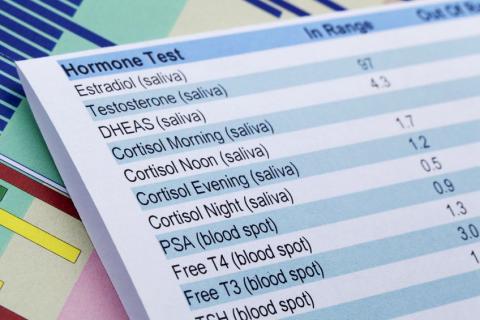Hormone Health: A Complete Guide (2024)
So hormonal imbalance is something I see regularly in clinic.
One key thing to understand about hormonal imbalance is it is normally an effect of an imbalance somewhere else. It is a symptom of an imbalance rather than an imbalance in it’s own right. This is a HUGE concept to understand as it means we need to look elsewhere. We need to understand what else is going in your life, in your body which may need some support.
One of the most important things to consider is stress when it comes to hormone balance. The reason being is when we have an increased demand for cortisol (which is when we are stressed) there is an up regulation in the enzymes which convert our cholesterol to cortisol and a down regulation in the enzymes that convert cholesterol to oestrogen and testosterone. This is what we call the cortisol steal.
But it is obviously not this simple. There many factors which may be contributing to symptoms.
The Institute of Functional Medicine have a term, ‘PTSD’, which stands for: Production, Transport, Sensitivity, Detoxification. It is an incredibly useful way of thinking about each aspect of hormone balance and hormonal health.
Production
So commons sense tells you hormones need building blocks – they need nutrients and ‘subspaces’ to be created. So rather than a simplistic view of “you are low in this (testosterone/thyroxine/oestrogen), so let’s give you some” we need to understand what are the building blocks to…..oestrogen, for example. Well we know cholesterol is one. So what impact may long term use of statins have on hormonal health? When you are put on statins are you having your oestrogen monitored on a regular basis to ensure it is ‘in range’? The same is true for testosterone.
But what are the building blocks to the thyroid hormones (one being iodine), what are the building blocks to serotonin (tryptophan). The list goes on. We need to ask “why are your testosterone/oestrogen/thyroid levels low?” rather than just accept it and prescribe something to replace it.
Transport
We also know that hormones are bound in our circulation to a protein carrier. For example the sex hormones are bound to ‘sex hormone binding globulin’. Imagine it as the shuttle service for the sex hormones. Sex hormones bound to this are inactive. We also have ‘free’ testosterone and oestrogen in our circulatory system and this is the part we can actually use. A big question then is: what effects sex hormone binding globulin? Well it is decreased by obesity, androgens (male hormones), insulin, inflammation, corticoids and hypothyroidism.
So reducing carbohydrate intake for some people may be an important step in balancing their sex hormones. If SHBG is decreased, that ‘frees up’ sex hormones which may have a negative impact (excess oestrogen circulating around which may stimulate oestrogen sensitive tissue such as the breasts).
Sensitivity
Then we need to ask: are the cells actually sensitive to the fee hormone? This partly comes down to the health and integrity of the cell membrane and specific nutrients. For example, zinc and vitamin A are important for cellular sensitivity to thyroxine. Omega 3 is needed for a healthy cell membrane.
Detoxification
We then need to detoxify and eliminate excess hormones. So for example if someone is constipated they may not be effectively eliminating these hormones. We also know that proper gut function is essential to the detoxification and elimination of oestrogen so this is another aspect that may need to be considered.
This covers just some of the factors that need to be considered.
My hope here is to show you how many different strategies we have to support optimal hormonal health. While some may feel paralysis by analysis I hope the majority of you feel this empowering. We have many tools in our tool kit that may be beneficial is supporting a healthy hormonal system.


